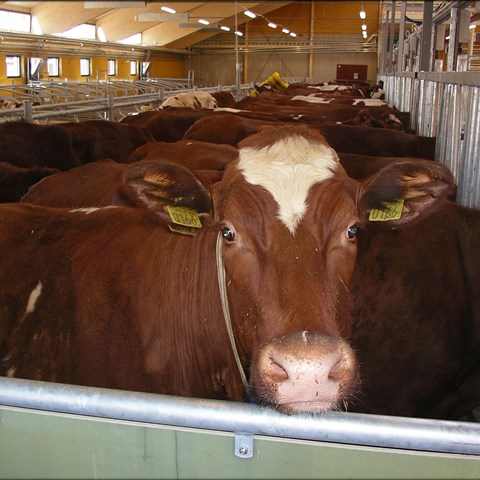Contact
Swedish Livestock Research Centre, Röbäcksdalens dairy research facility

At Röbäcksdalen about 2 km from Umea city center there is a national center for ruminant research. The research facility offers an excellent environment for evaluation and feeding of forages for predominantly dairy cows. There are also possibilities for management studies and studies on calves and heifers.
The facilities at Röbäcksdalen are an important resource for research in forage and in sustainable milk production. Scientists and industry have access to a unique research environment, where new technologies in milk production are used and where research of the highest class is conducted. The facility, which was built in 2006, houses 127 dairy cows + recruitment animals. It is divided in two sections, one which is insulated and one which is not. Feed for the cows are produced on surrounding fields, which amounts to approximately 240 hectars. The crop rotation is forage intensive and predominately consist of grass and clover leys for pasture and silage and cereals, mainly barley.
All the animals in the farm belong to the breed Swedish red cattle, SRB, or Viking Red, which is the market name for the Swedish red breed. The herd is, and has long been, an elite herd of fine cows with high scores in the exterior assessments that are made several times a year. The herd also has a high genomic index which in Sweden is measured in NTM, Nordic Total Merit. According to the latest compilation, the average NTM of the herd is +13 NTM, which led to a fifth place among Swedish farms with SRB cows. In the spring of 2020, a heifer was sold from SLU Röbäcksdalen to Hollola for flushing of embryos and several of the heifers are every year on the genomic podium places within their respective breeding lines.
In the barn, there are about 110 dairy cows that have an average yield of about 10,500 kg ECM per cow and year. The milk has a fairly high fat content of over 4.6% and a protein content of about 3.6%. The calving interval is 12.6 months and the heifers calve at 24.4 months of age.
Some of the equipment in our research barn would not have been made possible without the help of donations. One specific donor which has meant a lot to NJV and to the barn is Kempestiftelserna. As an example they donated 5 million SEK for basic equipment when the barn was build in 2005-2006. They have also contributed to other types of equipment during the years, among others the GreenFeeds and the body condition score cameras.